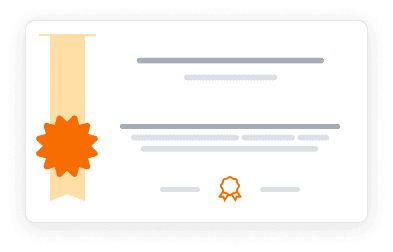Master key risk management concepts including hedging instruments, asset-liability management, and integrated risk management approaches.
Master key risk management concepts including hedging instruments, asset-liability management, and integrated risk management approaches.
This comprehensive finance course introduces essential risk management techniques for financial professionals. Students learn to analyze and implement various hedging strategies, understand asset-liability management principles, and develop integrated risk management approaches. The course covers crucial topics like basis risk, cross hedging, futures contracts, option strategies, and balance sheet risks. Upon completion, participants receive a valuable New York Institute of Finance certificate, with the option to pursue a complete Risk Management Professional Certificate through additional modules.
4.5
(63 ratings)
Instructors:
English
Arabic, German, English, 9 more
What you'll learn
Define and analyze basic risk sources and basis risks in futures hedging
Implement cross hedging techniques and calculate minimum variance hedge ratios
Optimize futures contracts for exposure hedging with tailing adjustments
Develop stock portfolio management strategies using market index futures
Master covered call and protective put option strategies
Understand ALM functions in commercial banking
Skills you'll gain
This course includes:
PreRecorded video
Graded assignments, exams
Access on Mobile, Tablet, Desktop
Limited Access access
Shareable certificate
Closed caption
Get a Completion Certificate
Share your certificate with prospective employers and your professional network on LinkedIn.
Created by
Provided by

Top companies offer this course to their employees
Top companies provide this course to enhance their employees' skills, ensuring they excel in handling complex projects and drive organizational success.





There are 5 modules in this course
The course provides a comprehensive introduction to risk management tools and techniques essential for financial professionals. It covers five key modules: Risk Reporting, focusing on profit distribution and risk factor analysis; Model Risk, examining VaR testing and exposure monitoring; Risk Management Tools, exploring equity swaps and index futures hedging; Liquidity and Operational Risk Management; and Asset and Liability Management, covering interest rate risk, duration gaps, and balance sheet immunization. The curriculum emphasizes practical applications while building theoretical understanding of risk management concepts.
Risk Reporting
Module 1
Model Risk
Module 2
Risk Management Tools
Module 3
Liquidity and Operational Risk Management
Module 4
Asset and Liability Management
Module 5
Fee Structure
Instructor

17 Courses
NYIF Instructor Specializing in Asset Pricing and Risk Management
Anton Theunissen is an instructor at the New York Institute of Finance (NYIF) with over twelve years of experience in financial services and more than a decade in academia, teaching finance, economics, and mathematics to both graduate and undergraduate students. His areas of expertise include asset pricing, fixed income, credit risk, market risk, and financial mathematics. Anton's research interests focus on the effects of securitization and rational default behavior on mortgage credit extension, contributing valuable insights to his teaching and coursework
Testimonials
Testimonials and success stories are a testament to the quality of this program and its impact on your career and learning journey. Be the first to help others make an informed decision by sharing your review of the course.
Frequently asked questions
Below are some of the most commonly asked questions about this course. We aim to provide clear and concise answers to help you better understand the course content, structure, and any other relevant information. If you have any additional questions or if your question is not listed here, please don't hesitate to reach out to our support team for further assistance.


